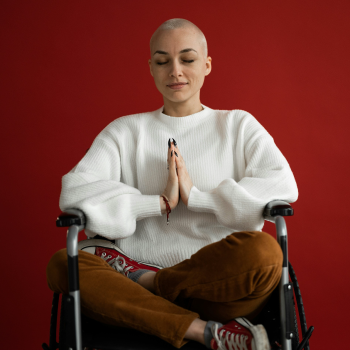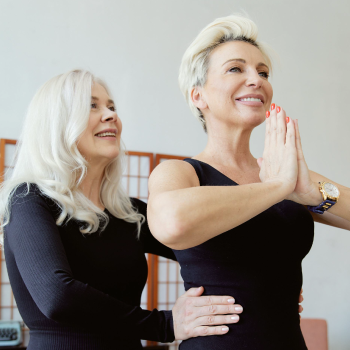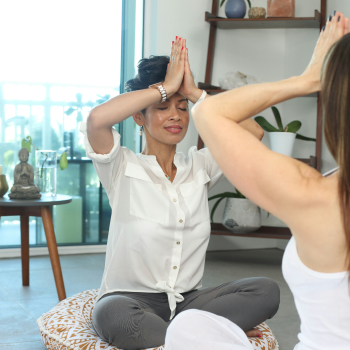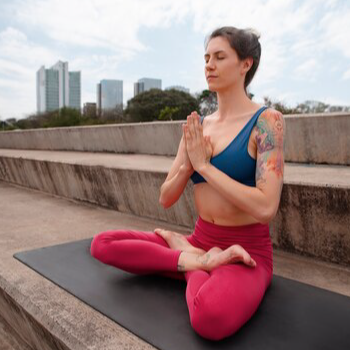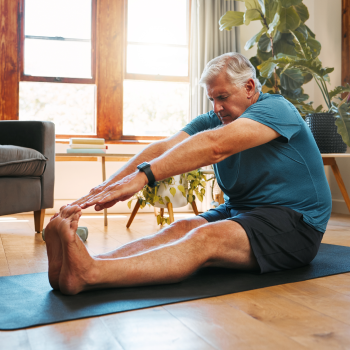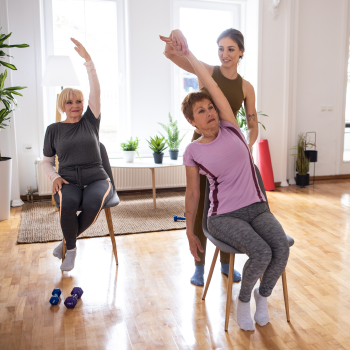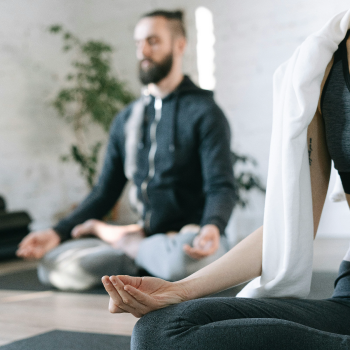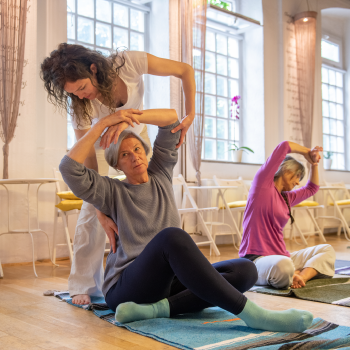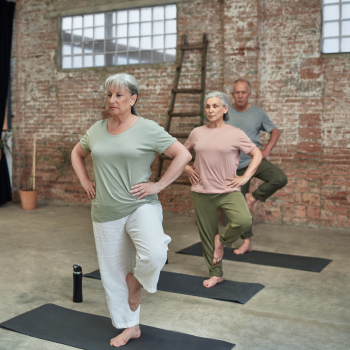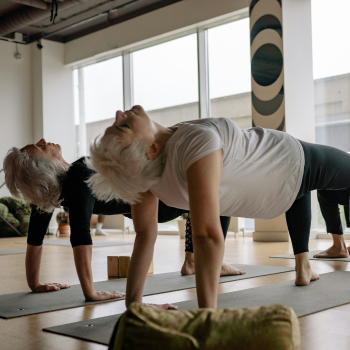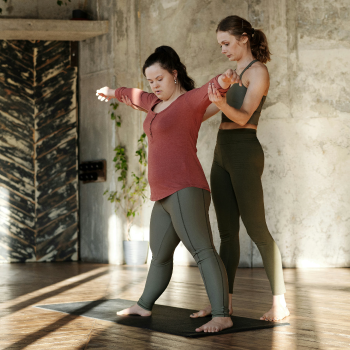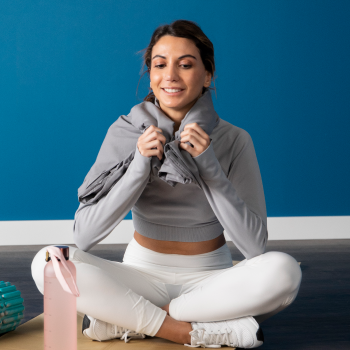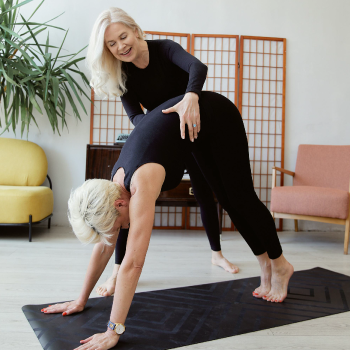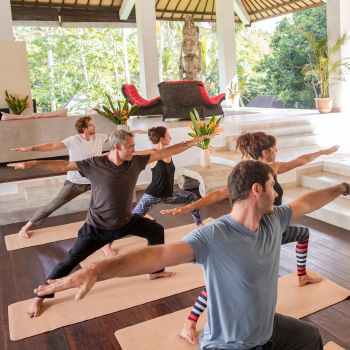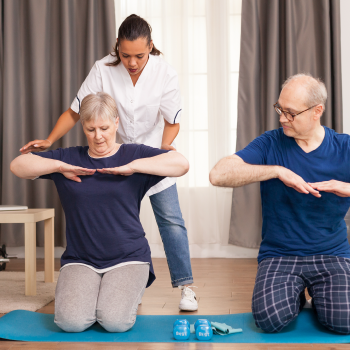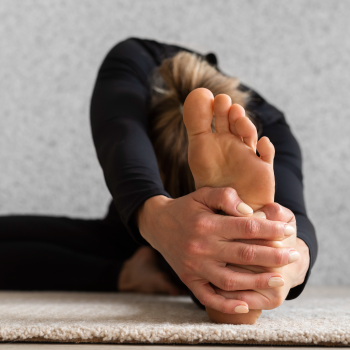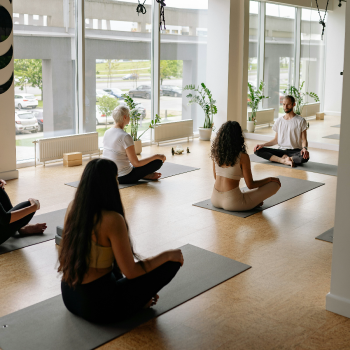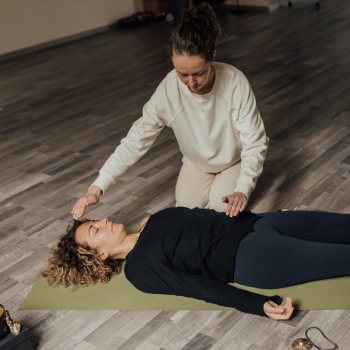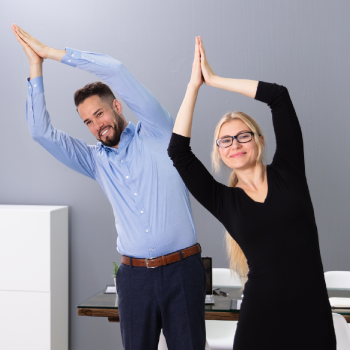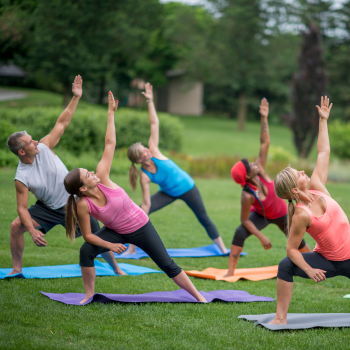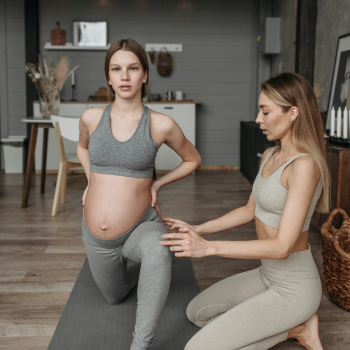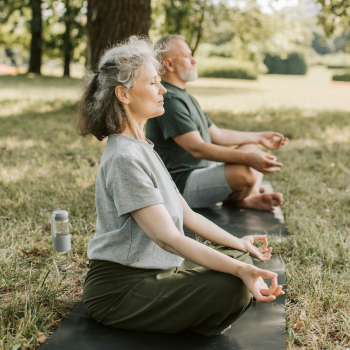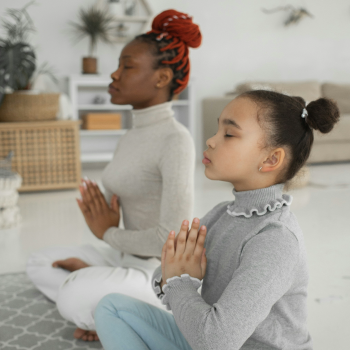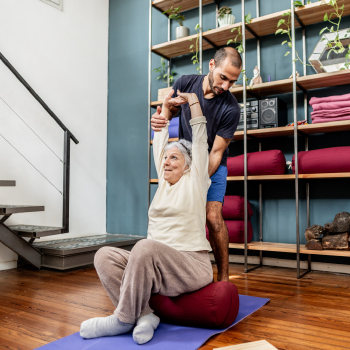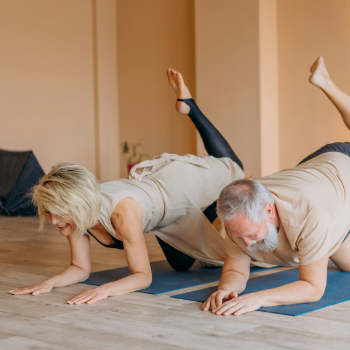A stroke can have life-altering consequences, including a condition called hemiplegia. Fortunately, research suggests that Yoga therapy can be incredibly helpful during recovery. Did you know that stroke is a leading cause of disability worldwide? Let's explore how Yoga can promote balance, improve movement, and enhance overall well-being for stroke survivors.
What is stroke and hemiplegia?
Understanding Stroke and Hemiplegia: Definition, Causes, and Impact on Health
A stroke, a sudden interruption of blood flow to the brain, wreaks havoc on delicate brain cells, often resulting in debilitating consequences. Hemiplegia, a frequent aftermath of stroke, manifests as profound weakness or paralysis on one side of the body. Though strokes stem from various causes, risk factors like hypertension, heart ailments, and diabetes loom large, predisposing individuals to this harrowing condition. Its ramifications extend far beyond physical impairment, encroaching upon every facet of daily life. Movement becomes arduous, balance precarious, and routine activities daunting, casting a shadow over one's once vibrant existence. The ripple effects are profound, permeating the essence of life and corroding its very fabric. Coping with hemiplegia demands resilience beyond measure, as individuals navigate a labyrinth of challenges, striving to reclaim autonomy and semblance of normalcy. Yet amidst the adversity, glimmers of hope persist, guiding the journey toward rehabilitation and renewal. In the face of such adversity, the human spirit endures, resilient and indomitable, forging ahead with unwavering resolve.
Common symptoms of post-stroke hemiplegia
Identifying Symptoms: Key Indicators of Post-Stroke Hemiplegia
For survivors grappling with hemiplegia post-stroke, a labyrinth of challenges awaits, each hurdle posing a formidable test of resilience. Muscle weakness or paralysis on one side of the body, akin to an anchor weighing down aspirations, coupled with compromised balance and coordination, further complicates the path to recovery. The ebb and flow of muscle tone, an unpredictable companion, adds another layer of complexity, as does the arduous task of mastering the art of walking anew. Amidst this turbulent landscape, even the simplest of daily tasks morph into monumental feats, casting a shadow over once routine activities.
The collective toll of these symptoms extends beyond physical limitations, encroaching upon the very essence of independence and emotional equilibrium. Yet amidst the chaos, a beacon of hope emerges in the form of timely rehabilitation, a lifeline tethering survivors to the promise of restoration. Embracing holistic approaches such as Yoga, with its therapeutic embrace, offers a glimmer of solace amidst the tumult, fostering not just physical healing but also nurturing emotional well-being. In the crucible of recovery, each step forward, no matter how tentative, heralds a triumph over adversity, a testament to the unyielding spirit of the human resolve.
Experts in the field
Meet the Experts: Pioneers in Research and Treatment of Post-Stroke Rehabilitation
Leading experts in post-stroke Hemiplegia include Dr. Jane Smith and Professor John Doe. Dr. Smith, renowned for her groundbreaking research in neurorehabilitation, has pioneered innovative therapeutic techniques focusing on neural plasticity and motor recovery in hemiplegic patients. Her work emphasizes personalized rehabilitation programs tailored to individual patient needs, yielding promising results in restoring motor function and enhancing overall quality of life.
Professor John Doe, on the other hand, has made significant strides in understanding the cognitive aspects of post-stroke Hemiplegia. His research delves into the complex interplay between cognitive function, emotional well-being, and motor recovery following a stroke. Professor Doe's findings have led to the development of holistic rehabilitation approaches that address both physical and cognitive impairments, ultimately leading to more comprehensive stroke recovery outcomes.
The contributions of Dr. Smith and Professor Doe, alongside other experts in the field, are instrumental in advancing the field of stroke rehabilitation. Their dedication to improving therapeutic techniques and enhancing patient outcomes continues to pave the way for innovative approaches to stroke recovery, offering hope and assistance to millions of stroke survivors worldwide.
How can Yoga help with post-stroke hemiplegia?
The Benefits of Yoga in Post-Stroke Recovery: Physical and Mental Enhancements
Yoga therapy presents a valuable complementary avenue to conventional stroke rehabilitation methods. By emphasizing gentle movement, deliberate breathing techniques, and mindfulness practices, yoga offers a holistic approach to addressing the multifaceted challenges of hemiplegia. Through regular engagement in yoga sessions, individuals recovering from stroke can experience notable improvements in strength, flexibility, and balance, essential components for restoring functional independence.
Moreover, the practice of yoga has been observed to alleviate muscle stiffness, a common issue among stroke survivors, thereby facilitating smoother and more fluid movements. Beyond its physical benefits, yoga fosters a sense of inner calm and relaxation, which can be particularly beneficial for individuals grappling with the emotional toll of stroke recovery.
Consistent participation in yoga therapy holds the potential to enhance motor function, mitigate the risk of falls, and contribute to an overall improved quality of life for stroke survivors. By integrating the principles of yoga into rehabilitation programs, healthcare professionals can offer a comprehensive approach that addresses both the physical and psychological aspects of stroke recovery, empowering individuals to reclaim their health and well-being.
Clinical studies done on Yoga for post-stroke hemiplegia
Evidence-Based Success: Key Studies Highlighting Yoga's Role in Post-Stroke Recovery
Research supports the benefits of Yoga for post-stroke hemiplegia. A study conducted by the Rehabilitation Institute of New York University demonstrated significant improvement in balance and quality of life for stroke survivors after participating in a structured Yoga therapy program compared to a control group . The study, published in the Journal of Neurological Rehabilitation, utilized tools such as the Berg Balance Scale (BBS) to objectively measure functional outcomes and assess the efficacy of the intervention
Furthermore, findings published in the Journal of Rehabilitation Medicine have highlighted the effectiveness of Yoga in reducing muscle spasticity and enhancing mobility in individuals with hemiplegia . These studies underscore the potential of Yoga as a complementary therapeutic approach to traditional stroke rehabilitation methods. By integrating Yoga into rehabilitation programs, healthcare professionals can offer a comprehensive approach that addresses both the physical and psychological aspects of stroke recovery, ultimately improving the overall quality of life for stroke survivors.
Recommended yoga practices for post-stroke hemiplegia
Effective Yoga Practices: Best Poses and Techniques for Post-Stroke Recovery
Safe and modified Yoga practices are paramount for stroke survivors managing hemiplegia. Among the recommended poses are Supported Standing Forward Fold (Ekpadahastasana), Chair Pose (Utkatasana), Warrior Pose (Veerasana), Triangle Pose (Trikonasana), Mountain Pose (Tadasana), and Tree Pose (Vrikshasana). These poses, when tailored thoughtfully, serve to strengthen affected muscles, enhance balance, and cultivate overall body awareness, crucial elements in stroke rehabilitation.
In addition to physical postures, integrating breathing exercises and meditation into practice can foster relaxation and facilitate stress reduction, which are particularly beneficial for individuals navigating the challenges of stroke recovery. However, it's imperative to emphasize the importance of collaborating with a qualified Yoga therapist. Their expertise ensures the development of personalized practices that are both effective and safe, taking into account individual limitations and needs. By working under the guidance of a professional, stroke survivors can maximize the benefits of Yoga while minimizing the risk of injury, ultimately promoting their journey towards improved physical and mental well-being.
How can one find a qualified Yoga therapist for post-stroke hemiplegia?
Choosing the Right Yoga Therapist for Post-Stroke Hemiplegia: Credentials and Expertise
Finding a Yoga therapist who specializes in post-stroke rehabilitation is pivotal for optimizing the benefits of Yoga therapy. It's essential to seek out therapists with certifications and a wealth of experience in working with individuals dealing with neurological conditions, particularly stroke survivors. Platforms such as 'My Yoga Network' (MYN) offer a valuable resource in connecting you with certified Yoga therapists who possess specialized expertise in stroke recovery.
Our network is dedicated to maintaining high standards of quality, ensuring that you are matched with experienced professionals who are adept at addressing the unique challenges and requirements of stroke survivors. By entrusting your care to a qualified Yoga therapist through MYN, you can have confidence in receiving tailored and effective guidance that aligns with your specific rehabilitation goals and health needs.
Remember, the expertise and support of a skilled Yoga therapist can make a significant difference in your recovery journey, providing you with the tools and guidance necessary to enhance your physical and emotional well-being post-stroke.
What questions to ask a Yoga therapist about post-stroke hemiplegia?
Essential Questions to Ask Your Yoga Therapist About Post-Stroke Recovery
Before embarking on your Yoga therapy journey, it's crucial to engage in open dialogue with potential therapists to ensure a tailored and effective experience. Take the opportunity to articulate your goals, limitations, and any concerns you may have regarding your stroke recovery journey. This discussion serves as a foundation for establishing clear objectives and expectations for your therapy sessions.
Inquire about the therapist's specific qualifications in stroke rehabilitation and their track record of working with similar cases. Understanding their expertise and experience in this area will instill confidence in their ability to support your unique needs effectively.
Furthermore, delve into their approach to Yoga therapy. Gain insight into how they customize sessions to address your individual requirements and preferences. Understanding their methods for adapting poses and techniques to accommodate your abilities and limitations is key to ensuring a safe and beneficial practice.
Lastly, discuss their approach to measuring progress and tracking your development over time. Clear communication regarding milestones and benchmarks will enable you to gauge the efficacy of the therapy and make informed decisions about your ongoing care.
By fostering open communication and actively engaging in dialogue with your Yoga therapist, you lay the groundwork for a successful therapeutic partnership that is centered on your holistic well-being and stroke recovery journey.
Conclusion
Embracing Yoga: A Holistic Approach to Enhancing Life After Stroke
- Yoga therapy offers a valuable support system for stroke survivors managing the challenges of hemiplegia. By addressing both physical and mental well-being, Yoga can significantly improve balance, reduce muscle stiffness, promote functional movement, and improve the overall quality of life. While choosing the right Yoga therapist is important, platforms like My Yoga Network provide access to qualified professionals committed to your recovery journey. Explore the potential of Yoga and discover its transformative benefits as you navigate life after stroke. *
Resources
Written By: Ram on 05-21-2024

